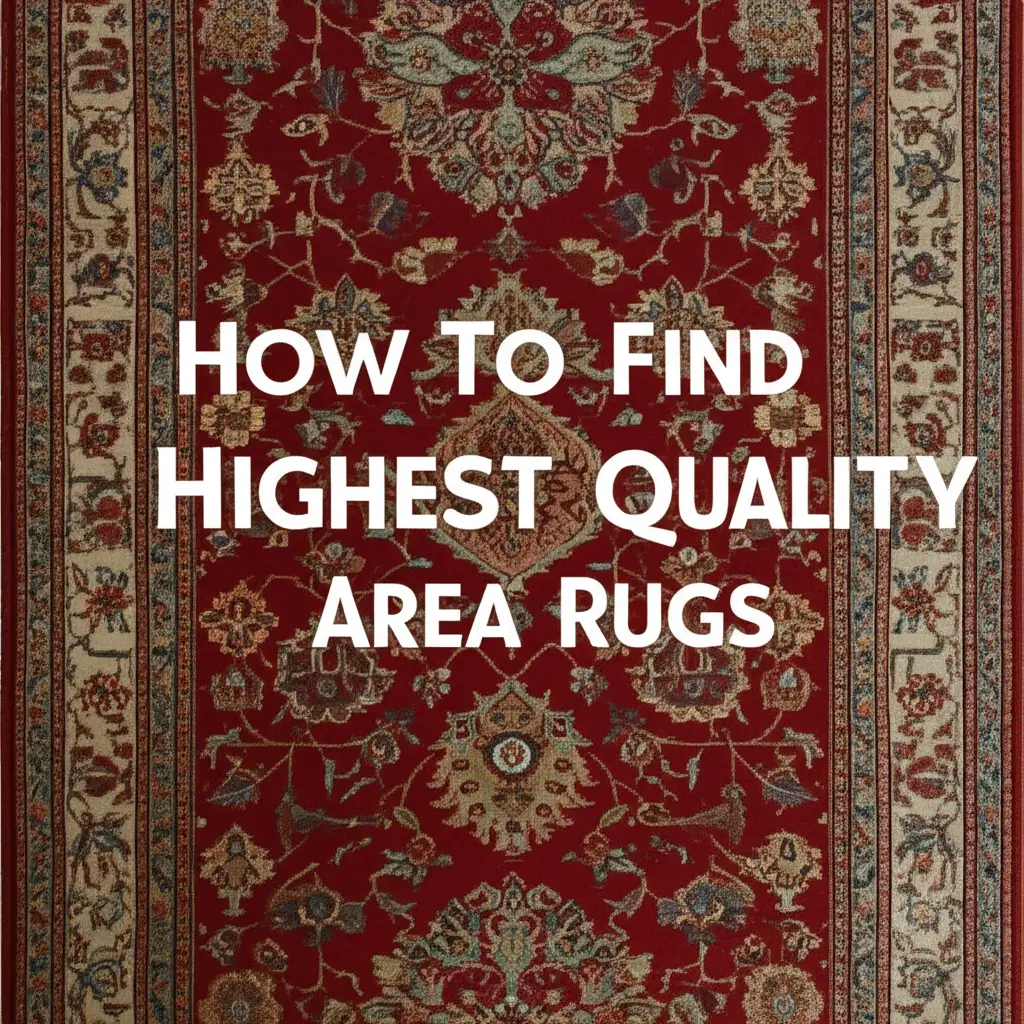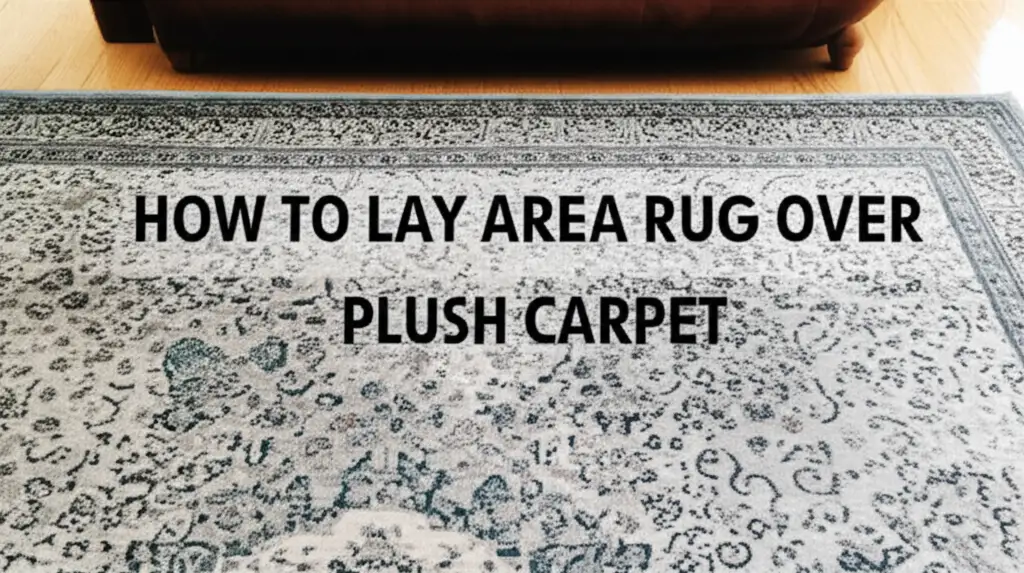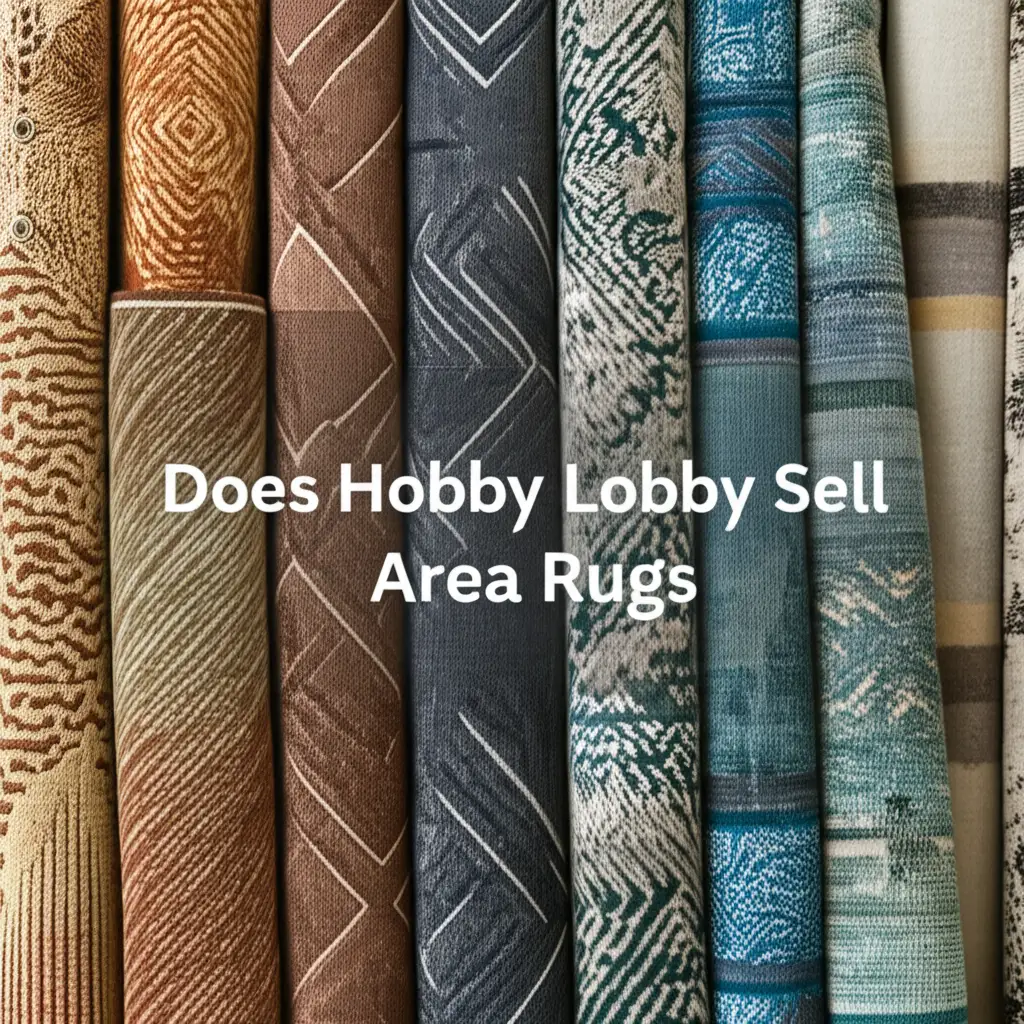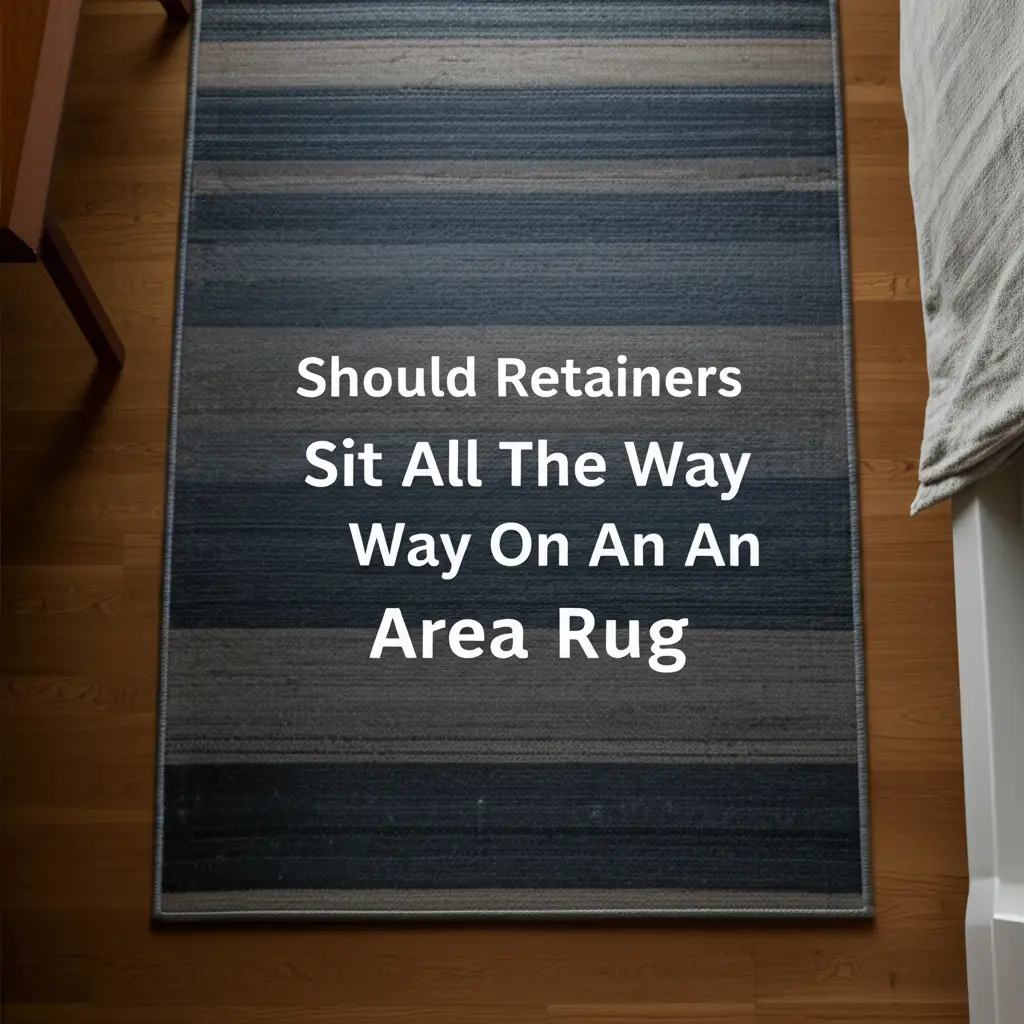· Tessa Winslow · Home Decor · 18 min read
How To Find Highest Quality Area Rugs

Discovering High-Quality Area Rugs for Your Home
An area rug can transform any room. It adds warmth, color, and texture. But finding the highest quality area rugs takes some effort. You want a rug that looks good and lasts. This article helps you understand what makes a rug high quality. We will cover materials, construction, and other important features.
Choosing a good rug means a smart investment. A quality rug can last for many years. It stands up to daily use. It also keeps its beauty over time. This guide provides clear steps. You will learn to spot a high-quality rug with confidence. I will share insights to help you make a wise purchase.
Takeaway
Finding the highest quality area rugs involves understanding specific features. Key aspects include:
- Material: Natural fibers like wool and silk often mean higher quality.
- Construction: Hand-knotted rugs are the most durable and valuable.
- Density: A higher knot count or pile density points to better quality.
- Backing: A sturdy, well-made backing adds stability and life.
- Dyes: Stable, natural dyes prevent fading over time.
- Reputation: Buying from reputable sellers ensures quality and fair practices.
To find the highest quality area rugs, focus on natural fibers like wool or silk. Look for hand-knotted construction, which offers excellent durability. Check for high pile density and a strong backing. These features ensure the rug lasts long and holds its beauty.
Understanding Quality Area Rug Materials
The material of an area rug tells you much about its quality. Different fibers offer different benefits. They affect how a rug feels, how it looks, and how long it lasts. Knowing these differences helps you choose wisely. I always start by checking the fiber content.
Natural fibers often indicate a higher quality rug. Wool is a popular choice for many reasons. It is soft, strong, and resists stains. Wool rugs keep their shape well. They also naturally resist fire. Silk rugs are very luxurious. They have a beautiful sheen. Silk is strong but needs gentle care. Cotton is another natural fiber. It is usually softer and more affordable than wool or silk. Cotton rugs are easy to clean. They work well for casual spaces. Jute and sisal are natural plant fibers. They are durable and have a rustic look. These materials are good for high-traffic areas.
Synthetic materials also exist in rugs. Nylon is very durable and resists crushing. It is good for busy homes. Polypropylene (olefin) is stain-resistant and affordable. It works well in outdoor spaces or basements. Viscose is a man-made fiber from wood pulp. It looks like silk but is less durable. It can shed more and needs special cleaning. Knowing the material helps you predict how a rug will perform.
- Wool Rugs: Wool is strong and soft. It resists stains and dirt well. Wool rugs also bounce back from heavy furniture. This material is a top choice for lasting quality.
- Silk Rugs: Silk offers luxury and a fine texture. It is strong but delicate. Silk rugs show color vibrantly. They are often heirlooms.
- Cotton Rugs: Cotton is breathable and soft. It is easy to wash for lighter rugs. Cotton rugs are good for a casual feel.
- Jute and Sisal Rugs: These fibers are tough and textured. They bring a natural look. They are great for areas with heavy foot traffic.
- Synthetic Rugs (Nylon, Polypropylene): Synthetics are budget-friendly. Nylon is very durable. Polypropylene resists moisture and stains. They offer good performance for the price.
Different materials also affect how you clean a rug. For example, cleaning a wool rug has specific steps. You can learn more about how to clean an area wool rug to keep it in good condition.
Evaluating Rug Construction Methods
The way a rug is made directly impacts its quality and durability. There are several main construction methods. Each method results in a different type of rug. Understanding these methods is key to finding highest quality area rugs. I always examine how a rug is put together.
Hand-knotted rugs are the highest quality. Artisans tie each knot by hand onto a warp and weft foundation. This process is time-consuming. It results in an extremely durable rug. Hand-knotted rugs can last for generations. They often gain value over time. You can see individual knots on the back of these rugs. The pattern is usually clear on both sides. These rugs are often made in countries famous for rug weaving. You might want to explore what country is best for area rugs if you are looking for hand-knotted pieces.
Hand-tufted rugs are made differently. A design is punched through a fabric backing with a tool. Loops of yarn form the pile. Then, a layer of latex glue is applied to the back to hold the yarns. A cloth is often put over the glue. Hand-tufted rugs are quicker to make than hand-knotted ones. They are less expensive. They can be durable, but the latex backing can break down over time. This leads to shedding.
Hand-hooked rugs are similar to hand-tufted ones. The yarn loops are left uncut. This creates a textured, looped surface. They also use a glue backing. Machine-made rugs, also called power-loomed, are made by large machines. They are very fast to produce. This makes them the most affordable option. They can be durable for their price. However, they generally do not match the longevity or artistry of hand-knotted rugs.
- Hand-Knotted: This is the best method for durability. Each knot is tied by hand. These rugs are highly valuable and last a very long time.
- Hand-Tufted: Yarn is punched through a backing. Latex glue secures the loops. These rugs are more affordable. They can shed as the glue ages.
- Hand-Hooked: Yarn loops are left uncut. This gives a different texture. They also use a glue backing and are less durable than hand-knotted rugs.
- Machine-Made (Power-Loomed): Machines weave these rugs quickly. They are budget-friendly. They offer decent durability for the price.
Knowing the construction method helps you predict a rug’s lifespan. It also helps you understand its true value. A hand-knotted rug is a long-term investment.
Key Indicators of Rug Quality
Beyond material and construction, specific details reveal a rug’s quality. These are things you can often see and feel. Learning to spot these indicators helps you make an informed choice. I always look closely at these features.
One important factor is pile density. This refers to how tightly packed the fibers are. For hand-knotted rugs, it’s the knot count per square inch. A higher knot count means more detailed patterns and greater durability. For other rugs, you can try to part the pile. If you can easily see the backing, the density is low. A high-density rug feels plush and resists crushing. It will also last longer.
The pile height also matters. This is the length of the fibers. Low-pile rugs are durable and easy to clean. They work well in high-traffic areas. High-pile rugs, like shags, feel soft and luxurious. They offer warmth and sound absorption. However, they can be harder to clean. A quality rug will have consistent pile height across its surface.
Look at the rug backing. For hand-tufted and machine-made rugs, the backing holds the fibers. A good backing is strong and flexible. It prevents the rug from stretching or bunching. Poor quality backings can crack or shed over time. For hand-knotted rugs, the back should be tightly woven and supple. The pattern should be clear on the back, almost a mirror image of the front.
Dyes are another quality indicator. High-quality rugs use stable, colorfast dyes. These dyes resist fading from sunlight or cleaning. You can test for colorfastness by rubbing a damp white cloth on a small, hidden part of the rug. If color transfers, the dyes may not be stable. Natural dyes often produce richer, more varied colors that age beautifully.
Finally, check the fringe and edges. On high-quality rugs, the fringe is an extension of the rug’s foundation. It is not sewn on separately. The edges, or “selvages,” should be straight and tightly bound. This prevents fraying. These small details show attention to craft and quality.
- Pile Density: More fibers packed tightly means better quality. High density prevents crushing and wears well.
- Pile Height: Choose based on use. Low pile for durability. High pile for softness. Look for consistent height.
- Rug Backing: A strong, flexible backing adds stability. It stops the rug from slipping and extends its life.
- Dyes: Stable, colorfast dyes prevent fading. Good dyes keep the rug’s beauty for years.
- Fringe and Edges: Tightly bound edges and integrated fringe show good craftsmanship. This prevents wear and tear.
These details might seem small. But they contribute greatly to the overall quality and lifespan of an area rug.
Origin and Reputable Sellers
The origin of an area rug can be a strong hint about its quality. Certain regions have long histories of rug weaving. They are known for specific techniques and materials. Buying from reputable sellers also ensures you get what you pay for. This is a crucial step when seeking highest quality area rugs. I always ask about the rug’s background.
Countries like Iran (Persia), Turkey, Afghanistan, India, and Pakistan are famous for hand-knotted rugs. These regions have passed down weaving traditions for centuries. Rugs from these places often use high-quality wool and traditional dyes. They are known for their intricate designs and durability. Each country or region may have its own distinct style and knotting technique. For instance, Persian rugs are renowned for their fine knot count and complex patterns. If you want to know more about the best places to buy rugs, you can explore what country is best for area rugs.
Buying from a reputable seller is just as important as knowing the origin. A good seller provides clear information about the rug. They will tell you about the materials, construction method, and origin. They should also offer a fair return policy. Look for sellers with positive reviews and a long history in the rug business. Avoid sellers who seem too eager to make a quick sale. Be wary of prices that seem too good to be true for hand-knotted rugs.
Online sellers should provide high-resolution photos. They must also give detailed descriptions. Ask for samples if possible. Check their customer service reputation. A good seller cares about their products and customers. They stand behind the quality of their rugs.
Ethical sourcing is another point to consider. Reputable dealers often work directly with weavers. This ensures fair labor practices. It also helps preserve traditional crafts. Supporting these practices means your high-quality rug has a positive story behind it.
- Geographic Origin: Countries like Iran, Turkey, and Afghanistan are known for high-quality, hand-knotted rugs. Their traditions mean better craftsmanship.
- Seller Reputation: Choose sellers with strong reviews and a history of good service. They offer transparency and stand by their products.
- Detailed Information: A good seller provides full details on materials, construction, and origin. They answer your questions clearly.
- Ethical Sourcing: Look for sellers who ensure fair wages and good working conditions for weavers. This supports the craft and its people.
A rug’s journey from weaver to your home matters. Knowing its origin and buying from a trusted source adds to its value and quality.
Considering Durability and Longevity
When you invest in an area rug, you want it to last. Durability and longevity are core components of highest quality area rugs. A rug’s ability to withstand daily life depends on several factors. I think about how much traffic an area gets.
The choice of material affects how long a rug lasts. Wool is known for its resilience. It bounces back from pressure. Nylon is also very durable, especially for synthetic options. These materials resist wear and crushing. Silk is beautiful but more delicate. It is better for low-traffic areas. Jute and sisal are strong but can be rough. They stand up well to foot traffic.
Construction plays a big part in longevity. Hand-knotted rugs are the most durable. Their individual knots make them incredibly strong. They can endure decades of use. Hand-tufted rugs are less durable due to their glue backing. The glue can degrade over time. Machine-made rugs offer fair durability for their price. They might last several years. However, they will not last as long as a hand-knotted piece.
Pile density contributes to durability. A dense rug resists matting and wear. It holds its shape better. High-traffic areas need a dense, low-pile rug. This prevents dirt from sinking deep into the fibers. A low-pile rug is also easier to vacuum.
Proper care also makes a rug last longer. Regular vacuuming removes dirt that can cut fibers. Immediate stain removal prevents permanent damage. Professional cleaning every few years helps maintain the rug’s condition. You can find many guides on how to clean area rugs inside to keep your rug fresh. For specific needs, like keeping a light-colored rug clean, check out tips on how to keep a cream area rug clean.
Placing a rug pad underneath also adds to its life. A rug pad prevents slipping. It also cushions the rug from impact. This reduces wear on the fibers. It is an easy step that adds years to a rug’s life.
- Material Choice: Wool and nylon offer great durability. Silk suits lower traffic areas.
- Construction Method: Hand-knotted rugs offer the longest lifespan. They are built to last.
- Pile Density: High-density rugs wear better and resist crushing. They handle traffic well.
- Proper Care: Regular cleaning and maintenance extend a rug’s life. Stains need quick action.
- Use of Rug Pad: A rug pad protects the rug from friction. It also adds comfort.
Choosing a durable rug means enjoying its beauty for many years. It is an investment that pays off over time.
Budgeting for Your Quality Area Rug
Investing in highest quality area rugs means understanding price points. Quality rugs are an investment. They often cost more upfront. However, they save money over time by lasting longer. I always set a budget before I start looking.
The price of an area rug varies widely. It depends on several factors. Material is a major cost driver. Silk rugs are often the most expensive. They use delicate fibers and skilled craftsmanship. High-quality wool rugs also command a higher price. They offer great durability and natural beauty. Synthetic rugs like polypropylene are the most affordable. They offer good value for everyday use.
Construction method also impacts cost. Hand-knotted rugs are the most expensive. This is due to the labor-intensive process. Each knot is tied by hand. This takes many months, or even years, for a large rug. Hand-tufted and hand-hooked rugs are less expensive. They use less skilled labor and faster production methods. Machine-made rugs are the least costly. They are mass-produced quickly.
Size is another obvious factor. A larger rug will cost more than a smaller one of the same quality. The complexity of the design also affects price. Intricate patterns with many colors require more skill and time. This increases the cost.
Consider your long-term goals for the rug. If you want a piece to pass down, a hand-knotted wool or silk rug is a good choice. This is a true investment. If you need a rug for a few years, a well-made machine-made or hand-tufted rug might be enough. It balances cost with lifespan.
Remember that quality means value. A rug that costs more but lasts 20 years is cheaper than buying a low-quality rug every 5 years. Factor in cleaning and maintenance costs too. A quality rug may need professional cleaning less often, or it cleans more easily. For specific cleaning, such as cleaning a spaghetti sauce stain, you might need to know how to clean spaghetti sauce off area rug. This also protects your investment.
- Material Impact: Silk and wool are premium materials. Synthetics are budget-friendly.
- Construction Costs: Hand-knotted rugs have the highest cost due to labor. Machine-made rugs are the least expensive.
- Size and Design: Larger rugs and complex patterns increase the price.
- Long-Term Value: A higher upfront cost for quality often saves money over time. It means fewer replacements.
- Total Ownership Cost: Consider both purchase price and maintenance. Quality can mean less frequent professional cleaning.
Budgeting for a quality area rug means thinking about its entire lifespan. It is an investment in your home’s comfort and beauty.
Caring for Your High-Quality Area Rug
You found the highest quality area rug for your home. Now you need to care for it. Proper care extends the rug’s life. It keeps the rug looking beautiful for years. I treat my rugs with regular care.
Regular vacuuming is the first step. It removes dirt and dust from the fibers. Dirt can wear down fibers over time. Use a vacuum with adjustable height settings. Avoid using a beater bar on delicate rugs, like hand-knotted or silk rugs. This can damage the fibers. Gently vacuum the rug in different directions to pick up all loose dirt. For general tips, you can always check if you are only suppose to vacuum rugs.
Spot cleaning is important for spills. Act quickly. Blot spills with a clean, white cloth. Do not rub the stain. Rubbing can spread the spill or push it deeper into the fibers. Use mild soap and water for most stains. Always test any cleaning solution on a small, hidden area first. This checks for color changes. For different rug types, specific cleaning methods apply. For example, faux fur rugs need special care. Learn how to clean faux fur area rug to keep it soft.
Rotate your rug regularly. Rotate it every 6 to 12 months. This ensures even wear. It also prevents one area from fading more than another due to sunlight. If one part of the rug gets more foot traffic, rotating helps spread the wear.
Professional cleaning is essential every few years. The frequency depends on foot traffic and household members. Pets and children mean more frequent cleaning. Professional cleaners have specialized equipment and knowledge. They can remove deep-seated dirt. They also treat tough stains. They use methods safe for your rug’s fibers and dyes. For example, wool braided rugs require specific cleaning techniques. You can find guidance on how to clean wool braided rugs.
Protect your rug from direct sunlight. Strong sunlight can cause fading. Use blinds or curtains to block harsh rays during peak hours. A rug pad also helps. It protects the rug from friction with the floor. It also provides extra cushioning. This reduces wear on the fibers.
- Vacuum Regularly: Remove dirt and dust. Use the right vacuum settings for your rug type.
- Spot Clean Spills: Act fast. Blot, do not rub. Test cleaning solutions first.
- Rotate Your Rug: Turn the rug to ensure even wear and prevent uneven fading.
- Professional Cleaning: Get professional cleaning every few years. This removes deep dirt.
- Sunlight Protection: Use blinds to protect your rug from fading caused by direct sun.
- Use a Rug Pad: A pad prevents slipping and cushions the rug, extending its life.
Caring for your rug is not hard. These simple steps ensure your beautiful rug lasts a long time.
Frequently Asked Questions
What is the best material for a high-quality rug?
The best material for a high-quality rug is usually wool. Wool is durable, soft, and resists stains and crushing. It handles high traffic well. Silk is another top choice for luxury and beauty. Silk is very strong but needs more delicate care. Both offer long-lasting appeal.
How can I tell if a rug is hand-knotted?
You can tell if a rug is hand-knotted by examining its back. The knots will be individual and slightly irregular. The pattern on the back will be clear and almost a mirror image of the front. The fringe will be an extension of the rug’s foundation, not sewn on.
Are machine-made rugs ever high quality?
Machine-made rugs can offer good quality for their price. They are durable for everyday use. They do not match the artistry or longevity of hand-knotted rugs. Modern machines make detailed patterns. They are a cost-effective option for many homes.
How long do quality area rugs last?
High-quality hand-knotted rugs can last for generations, often 50 to 100 years or more with good care. Hand-tufted rugs typically last 5-10 years. Machine-made rugs usually last 3-7 years. The lifespan depends on material, construction, and how well you care for the rug.
Is a high-density rug always better?
Yes, a high-density rug is generally better. High density means more fibers per square inch. This makes the rug more durable and resilient. It resists crushing and matting. A denser pile usually indicates higher quality construction.
What are signs of a poor-quality rug?
Signs of a poor-quality rug include shedding fibers, uneven pile height, and loose weaving. You might see a glue residue on the back or a very thin backing. Colors may bleed when wet, suggesting unstable dyes. The pattern might be blurry on the back.
Conclusion
Finding the highest quality area rugs means knowing what to look for. It is not just about price. It is about understanding materials, construction, and key details. A quality rug is an investment. It brings beauty and comfort to your home for many years. I hope this guide helps you in your search.
Remember to check the fiber content first. Look for natural materials like wool or silk for true quality. Examine the construction. Hand-knotted rugs are the best for durability and value. Pay attention to density, backing, and dyes. These small details show good craftsmanship. Finally, choose a reputable seller. They will provide honest information. With these tips, you are ready to find a beautiful, high-quality area rug. Go ahead, start your search with confidence.





